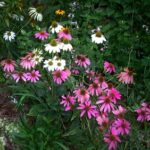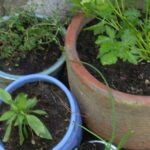Lots of people garden during the growing season, either as a hobby, to provide fresh produce for their family or as a way to turn a profit. No matter what your reason for gardening it is always necessary to know how to grow your plants.
Spearmint is a wonderful plant to try your hand at, especially if you are a beginner. It is a perennial herb that is fairly easy to grow.
What is Spearmint?
Spearmint is a perennial herb, which means that once you plant it, it will continue to grow year after year without having to replant. It is not a native of the USA, but it grows well here just the same. Originally hailing from eastern Europe, it grows in somewhat sunny, damp places without much care needed.
Spearmint can be used for many medicinal and food uses and is completely edible. It is a popular flavoring in items such as gum, mouthwash, toothpastes and candies.
Uses for Spearmint
Spearmint can be used in one of two categories: edible or medicinal.
Uses of spearmint for consumption include (though you might come up with your own): tea, flavoring, candy, jelly, additions to salads and more. Both the leaves and the flowers of the spearmint plant are edible and have a strong flavor. It is also used to flavor alcoholic beverages such as mojitos or mint juleps.
Medicinally, spearmint has many uses, including the aforementioned tea. The oil created from the plant is also considered a great cure as a rub for stiffness, muscle soreness and rheumatism. Spearmint oil is also a strong antiseptic and should not be consumed in large quantities. Spearmint tea has an entire list of uses itself, including treatment of the following: bronchitis, cramps, fevers, chills, the common cold, chronic gastritis, headaches, indigestion, motion sickness, nasal congestion, halitosis, morning sickness, painful menstruation and other minor ailments. Crushing the stems and leaves can make a poultice that can be applied to bruises.
For centuries, spearmint has been considered to have great medicinal properties, and today it is commonly used as a form of alternative medicine. Current research is developing evidence that spearmint could be beneficial in treating many ailments, illnesses and diseases, most notably of which is cancer.
Spearmint is also considered to be a repellant of certain pests that include insects, rats and mice.
Scientific Classification of Spearmint
The binomial name of spearmint is mentha spicata.
Scientifically, spearmint is classified in the following manner:
Kingdom: Plantae
Phylum: Angiosperms
Class: Eudicots
Order: Lamailes
Family: Lamiaceae
Genus: Mentha
Species: Spicata
Variations of Spearmint
There are several hybrids of the spearmint plant, most notably peppermint.
Other variations include the large apple mint and the ginger mint.
Similar Herbs
Peppermint is incredibly similar to spearmint and is, actually, a hybrid of the spearmint plant and another herb. (See here for more information of peppermint.) Telling the difference between peppermint and spearmint can be difficult without tasting it.
Spearmint leaves are slightly smaller while peppermint leaves are slightly larger. Another notable difference in the leaves is the color. Spearmint leaves are a brighter green than peppermint leaves, which are a dark green with a purple tint.
Tips and Tricks for Growing Spearmint
Spearmint growing tip one: plant it six weeks before the last frost if you plan to grow it inside.
Spearmint growing tip number two: plant it in the spring after the last frost if you plan to grow it outside.
Spearmint growing tip number three: You don’t need to bury the spearmint seeds. Press them just into the surface. They will take about ten to fifteen days to start appearing.
Spearmint growing tip number four: Sow the seeds about a ¼ inch apart from the other spearmint seeds.
Spearmint growing tip number five: Once your spearmint plants have begun to grow and are approximately one foot tall, begin thinning your spearmint plants. Space the spearmint plants approximately one foot apart.
Spearmint growing tip number six: They are considered an invasive species, so be careful when planting them near other plants. It might be best to keep a separate space for them or to sink something into the ground to contain their roots so that your spearmint plants don’t overtake your other plants.
Spearmint growing tip number seven: Grow it in sunlight. It will do will in partial sunlight, but direct sunlight works best for spearmint.
Spearmint growing tip number eight: Water is key to growing any plant and spearmint is no exception. Spearmint thrives in damp soil. Keep your plants watered but not overly so.
Sources:
Mentha Spicata – Wikipedia
Difference Between a Spearmint Plant and a Peppermint Plant
Spearmint | Garden Guides
Spearmint Plant Guide | Spicata Plant Information | Garden Guides
Spearmint, herb uses Mentha Spicata



